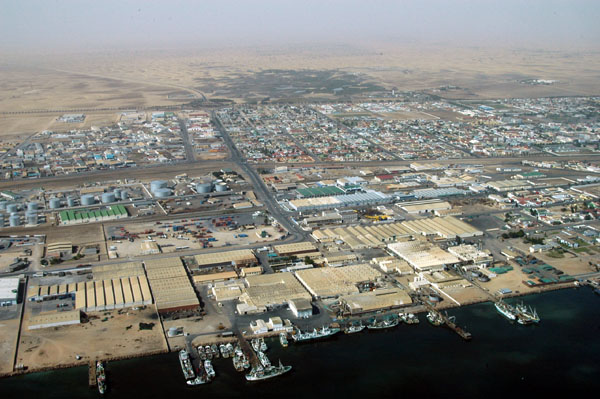Namibia, located in Southern Africa, has long been a country of contrasts, from its stark desert landscapes to its vibrant cultural diversity. Over the years, the nation has undergone significant demographic changes that have reshaped its population structure and will continue to influence its future trajectory. From declining fertility rates to rapid urbanization and an aging population, Namibia’s demographic shifts present both challenges and opportunities. This article will explore the key trends shaping the country’s population, their implications, and what the future holds for Namibia’s people.
Understanding Namibia’s Demographic Trends
Demographic trends are essentially the statistical study of populations, including the size, growth rate, age distribution, and geographical location. These trends help governments, businesses, and societies plan for the future. Namibia’s changing demographics offer both insights and lessons that other countries facing similar challenges can learn from.
1. Population Growth and Fertility Rates
One of the most striking trends in Namibia’s demographics is the significant shift in fertility rates. According to the 2022 census, Namibia’s Total Fertility Rate (TFR) has fallen to 2.7 children per woman, down from 5.0 in the early 1990s. While still above the replacement level of 2.1, this decline marks a turning point for the country, signaling shifts in family planning, societal values, and access to healthcare.
Factors driving this decline include:
- Increased Access to Family Planning: The availability of contraceptives and reproductive health services has allowed more women in Namibia to control the number and timing of their children.
- Education and Female Empowerment: As women in Namibia gain better access to education, they tend to marry later, delay childbearing, and have fewer children. Education also leads to greater workforce participation, reducing the economic necessity of large families.
- Economic Development: Economic conditions have shifted in Namibia, with urbanization increasing and agricultural lifestyles giving way to more industrialized and service-oriented work. These changes make smaller families more economically viable.
While Namibia’s fertility rate remains above replacement level, experts predict that it will continue to decline in the coming years, potentially leading to slower population growth.
2. Urbanization: The Rise of Cities
Another key demographic trend in Namibia is the increasing rate of urbanization. According to the 2022 census, over 54% of Namibia’s population now resides in urban areas, a notable increase from past decades. Cities like Windhoek, Swakopmund, Walvis Bay, and Rundu have experienced rapid population growth, driven by internal migration from rural areas as people seek better economic opportunities, education, and healthcare.
This urban migration has been fueled by:
- Economic Opportunities: Cities in Namibia offer greater employment prospects, particularly in industries such as mining, manufacturing, and services. Rural areas, on the other hand, remain heavily dependent on subsistence agriculture, which often fails to provide sustainable income or job growth.
- Education and Healthcare Access: Urban centers typically offer better schools and healthcare services, which are key drivers of population movement. Better access to services encourages families to relocate to cities for improved prospects for their children.
- Infrastructure and Modern Amenities: Improved infrastructure in urban areas, including roads, water, sanitation, and electricity, has made city living more attractive. As rural areas lag behind in development, people are drawn to urban centers for a higher standard of living.
However, this urbanization trend comes with challenges. Cities face issues such as overcrowding, housing shortages, strained public services, and environmental degradation. Managing this growth and ensuring that urbanization is sustainable will be critical for Namibia’s future.
3. Aging Population: A Growing Concern
Like many other countries, Namibia is experiencing an aging population. While the country’s population is still relatively young, with a median age of around 20 years, the aging trend is becoming more pronounced. The 2022 census revealed that the proportion of elderly citizens (those aged 60 and above) is steadily increasing. This demographic shift is largely due to improvements in healthcare, which have led to higher life expectancy and lower mortality rates, particularly for children and women during childbirth.
The implications of an aging population include:
- Pressure on Social Services: As the elderly population grows, there will be increased demand for healthcare services, pensions, and elder care facilities. Namibia’s social safety net will need to be expanded to ensure that the elderly receive adequate care and financial support.
- Labor Force Shrinking: A smaller working-age population, coupled with a growing elderly population, could result in labor shortages. This may put pressure on Namibia’s economy and require the government to explore policies such as pension reform, tax changes, and encouraging skilled immigration.
- Sustainability of Health Systems: As life expectancy continues to rise, Namibia’s healthcare system will need to adapt. Older populations typically have a higher incidence of chronic conditions such as hypertension, diabetes, and arthritis. The health system will need to focus on preventive care, chronic disease management, and geriatric care.
4. Migration: Internal and External Factors
Namibia’s demographics are also influenced by both internal migration from rural to urban areas and external migration patterns. The country has experienced significant population movements due to its historical, social, and economic contexts. The flow of people across its borders, especially from neighboring countries like Angola, Zambia, and South Africa, impacts Namibia’s population size and structure.
- Internal Migration: As mentioned, rural-urban migration is a key driver of Namibia’s demographic changes. People are drawn to cities for employment, education, and better access to services. However, this urbanization has created challenges in terms of infrastructure development, housing, and the provision of public services.
- External Migration: Namibia has historically been a destination for migrants seeking work, particularly in the mining sector. External migration influences population growth and labor force dynamics. Namibia’s proximity to Angola, a country with a growing economy, has also contributed to migration flows into the country.
Managing migration effectively will be important for Namibia to balance population growth and ensure that both rural and urban areas can thrive.
5. Gender and Youth Demographics
Namibia has a relatively youthful population, with a large proportion of people under the age of 30. This youth bulge offers both opportunities and challenges for the country. On one hand, a youthful population is often seen as an asset, as it can drive economic growth, innovation, and entrepreneurship. However, it also creates significant pressure on education systems, employment, and social services.
- Youth Unemployment: Namibia faces high youth unemployment, which poses a challenge for the country’s economic development. If young people cannot find jobs, they may face long-term economic hardship, which could result in social instability.
- Gender Equality: Gender dynamics also play a role in Namibia’s changing demographics. Namibia has made progress in empowering women through education, healthcare, and political participation. However, there remain disparities, especially in rural areas. Ensuring gender equality in education and employment opportunities will be crucial to Namibia’s future development.
Implications for Namibia’s Future
The demographic shifts in Namibia will shape the country’s future in many ways. The decline in fertility rates, aging population, rapid urbanization, and youth bulge are just some of the factors that will influence the nation’s economic, social, and political landscape.
To harness the opportunities and mitigate the challenges posed by these trends, Namibia must focus on:
- Investing in education and skills development to ensure that its youthful population is prepared for the future job market.
- Fostering sustainable urbanization by ensuring that cities have the infrastructure and services needed to accommodate growing populations.
- Adapting healthcare systems to meet the needs of an aging population, with a focus on chronic disease management and elder care.
- Creating policies that support gender equality and empower women to participate fully in the workforce and society.
In conclusion, Namibia’s changing demographics are a reflection of broader global trends and offer a mix of challenges and opportunities. The country’s future will depend on how it navigates these changes, with a focus on sustainable development, equitable economic growth, and social cohesion. By understanding and addressing these demographic shifts, Namibia can chart a path toward a prosperous future for all its citizens.
Join 'Namibia Today' WhatsApp Channel
Get the breaking news in Namibia — direct to your WhatsApp.
CLICK HERE TO JOIN












